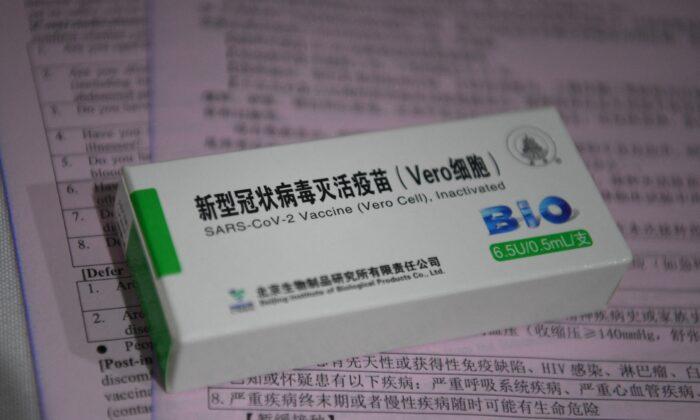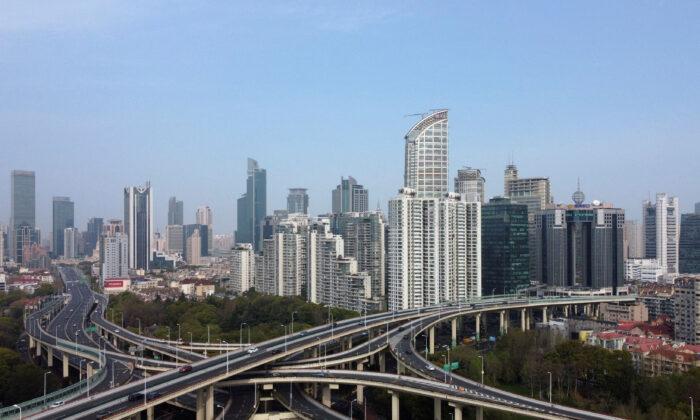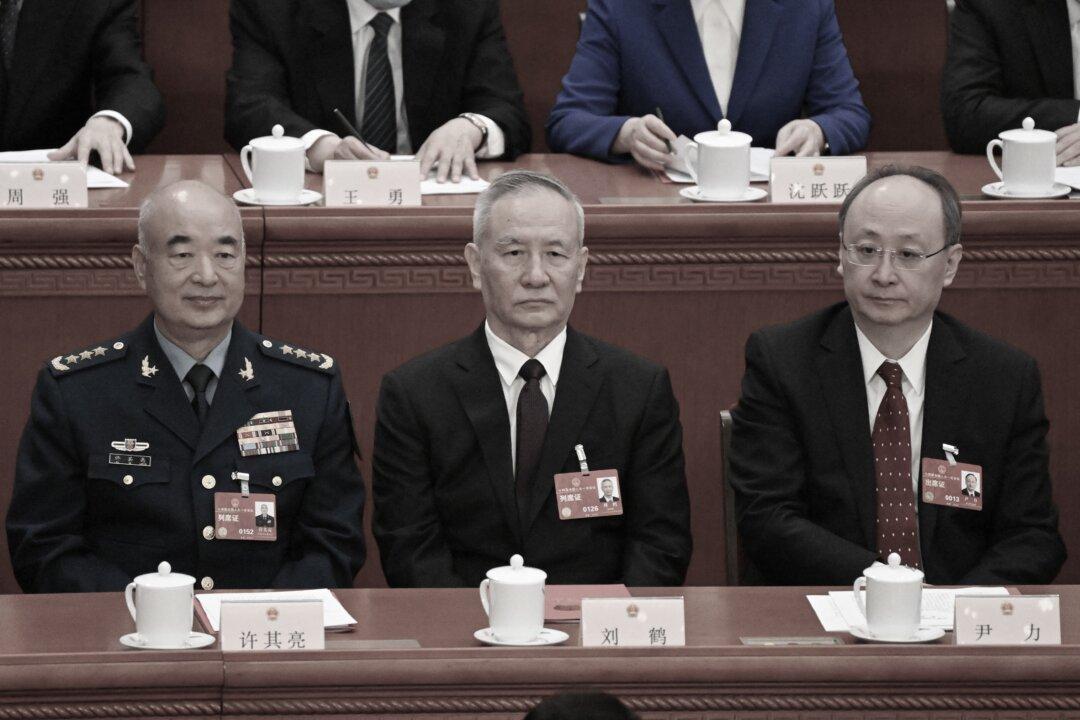Chinese scientist Yang Xiaoming, the chief researcher who led the development of China’s first COVID-19 vaccine, is under investigation and has been ousted from the National People’s Congress, the Chinese Communist Party’s (CCP) rubber-stamp parliament.
On April 23, the Chinese state media reported that Mr. Yang had been stripped of his position as a delegate to the National People’s Congress of the CCP “due to serious discipline and law violations.”
Mr. Yang was born in 1962 and has been extensively involved in the research, development, production, and management of biological products. He was the chairman of Sinopharm’s vaccine subsidiary, China National Biotec Group, since 2010.
Head of China’s COVID-19 Vaccine Project
He gained recognition in China due to his leadership in developing China’s first inactivated COVID-19 vaccine during the COVID-19 pandemic. On Dec. 30, 2020, the vaccine developed by Sinopharm was approved by Chinese authorities, becoming China’s first domestically produced COVID-19 vaccine.In April 2021, Mr. Yang said at a public event, “China developed the inactivated COVID-19 vaccine in just 98 days.”
He also mentioned during an interview with Chinese media that the entire process, from project approval to research, development, and market launch, took over 330 days for China National Biotec’s COVID-19 vaccine, which, from a scientific perspective, was an unprecedentedly short period.
Internationally, the development and launch of a vaccine typically takes more than ten years. Even in faster scenarios, it usually takes 5 to 6 years.
Reasons Behind Yang’s Purge
U.S.-based China affairs commentator Tang Jinyuan believes that Mr. Yang’s purge is likely related to the concentrated outbreak of side effects to the Sinopharm vaccines.On April 28, Mr. Tang told The Epoch Times that after the CCP’s COVID-19 vaccines were launched, Chinese citizens were generally forced to receive two to three doses, leading to a continuous increase in the amount of post-vaccination adverse reactions. He believes that once adverse reactions to vaccines enter a concentrated outbreak phase, the CCP authorities would be unable to continue concealing them.
“Therefore, I believe that the CCP is likely to use this method to shift the blame in advance, making Yang Xiaoming a scapegoat to bear the responsibility,” he said. “If there is a large-scale outbreak of adverse reactions to the vaccine, people will demand accountability and compensation. The CCP can shift all responsibility to Yang Xiaoming, claiming that the vaccine he developed was the cause.”
Lai Jianping, a former Beijing lawyer and Canadian chairman of the Democratic Front, believes that Mr. Yang was a key figure in Chinese leader Xi Jinping’s COVID-19 strategy. Therefore, it is hard to believe such a top scientist would fall from grace due to corruption.
Mr. Lai told The Epoch Times that in order to maintain its authoritarian regime, the CCP typically prioritizes political loyalty and obedience over the regime officials’ corruption. He believes that Mr. Yang’s purge must involve sensitive political issues, possibly related to political disloyalty, espionage activities, or leaks of classified information he may have acquired during the COVID-19 vaccine development process, which the authorities view as a threat.
Adverse Reactions to China’s COVID-19 Vaccine
After the outbreak of the COVID-19 pandemic, Sinopharm, a Chinese state-owned enterprise, produced the first vaccine approved for emergency use in China. It was also the most widely approved for use globally among all Chinese-made vaccines.However, the effectiveness and safety of the vaccine have been widely questioned both domestically and internationally. Many people have complained on social media about various adverse reactions after receiving the Chinese COVID-19 vaccines, including measle-like rashes, leukemia, heart disease, and a large number of sudden deaths after vaccination.
In January, Jiang Yong (pseudonym), a resident of Nantong, China, told The Epoch Times that more than ten of his relatives died within a year after receiving the vaccine. He said that people of all ages developed various illnesses after vaccination, including diabetes, leukemia, spinal cord disorders, anemia, and others.
On Dec. 3, 2023, Qiu Yongcai, a 40-year-old South China University of Technology professor, passed away. Before his death, he underwent hematopoietic stem cell transplantation. He posted on China’s heavily censored social media platform, WeChat, that it was most likely due to the side effects of China’s COVID-19 vaccine. However, the post was quickly censored.
In June 2022, over a thousand parents in China issued an open letter, accusing companies such as Sinopharm and Sinovac Biotech of causing their children to develop type 1 diabetes after receiving inactivated vaccines produced by these companies. These children now need lifelong insulin injections.
In May 2022, leukemia patients from more than 30 provinces in China issued two open letters, saying that they were diagnosed with leukemia after receiving the Chinese-made COVID-19 vaccines. They were suppressed by the CCP and told they were prohibited from contacting the press or hiring lawyers to represent them.
Facing continuous public pressure, the CCP previously claimed that all “current party and state leaders,” as well as high-ranking officials, have received China’s COVID-19 vaccines. However, this statement received quick backlash from the Chinese public. Regarding allegations that China’s COVID-19 vaccinations led to leukemia and diabetes, CCP officials vehemently denied them.
Xin Ning contributed to this report.






